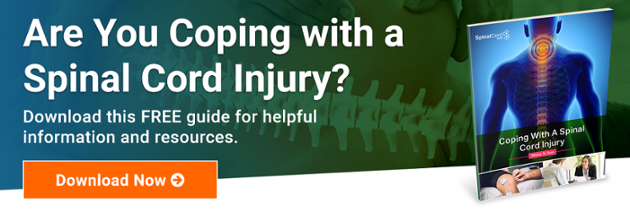Stay Safe in Your Wheelchair: Self-Defense You Need to Know NOW
After a spinal cord injury (SCI), it can be quite common to feel vulnerable in your wheelchair. If you're used to being able-bodied, it is especially difficult to begin to think of how you can really protect yourself from your wheelchair — and, we're not talking about using a gun.
Many attackers can be scared off with the right tools. If that doesn’t work, there also are self-defense moves that can be used from a wheelchair. You can stay safe NOW. Please read on to learn five tips for how you can protect yourself.
1: Try to Get Away
People often say it’s best to avoid a bad situation before it turns bad — and every wheelchair user needs to take heed of this advice closely. This is the best self-defense advice for any wheelchair user — even those with “Popeye arms” and a gun in their pocket. Roll away, and do so quickly. If you use a powerchair, it’s always good to have a fast speed, too, that you can kick into gear in case it’s ever needed.
2: Turn Your Wheelchair into a Ferocious Weapon
Rarely does anyone see a wheelchair and think “danger,” unless they’re worried about their toes getting run over. This is especially true of an unsuspecting attacker. They wouldn’t dream of a wheelchair being dangerous... but, it can be.
An excellent way to use your wheelchair as a weapon is to strike your accoster in the shins with your footrests. If you hit them hard enough, it can cause them to drop to their knees, allowing you to attack their head/eyes. The handles on your wheelchair also can be used if you back up into them fast, aiming for the groin area.
3a: Have Finger Movement? Use Pepper Spray
Pepper spray also is a great way to defend yourself. You can buy pepper spray online and it can be attached to your keychain so it’s always within reach. One quick spray (index finger movement is required) and the effects will last for up to 45 minutes. This self-defense tool is all about diversion. After you spray the assailant, try to get away as fast as you can. Do not attack any further.
If you have full mobility of your fingers, you can consider keeping a stun gun on you. This, too, can subdue your assailant, giving you time to escape. A stun gun can resemble all kinds of typical personal items as well (cell phone or even a wallet), allowing you to easily hide it.
3b: No Finger Movement? Use a Personal Alarm
If you can't use your fingers but can use your arms — or even just your head/mouth — a personal alarm can be positioned anywhere on your wheelchair, allowing you to activate it. These tiny electronic whistles give off a very loud shrill noise and will get the attention of anyone in a wide radius. They are so loud that most attackers will leave the situation once it’s activated. Sometimes yelling for help is not enough, and most attackers know this. Personal alarms also can be bought online.
4: Use Your Elbow
The elbow is the strongest bone in the body, which makes it a great weapon. If it does come to hand-to-hand combat, you may not have the best chance. However, if you use your elbow(s), you can deliver solid blows. When you do, it’s called using an “elbow strike.” This is a fast attack movement to the chin, side of the face/jawline, solar plexus, or groin area. It can be surprisingly effective, especially if they come from behind and you aren’t expecting it. Just jab directly behind you.
5: Attack the Groin and Knees
If more physical moves are needed, you can always aim for the knees, which are critical parts of the body as well as full of nerve endings. Aiming for the groin area is also another area of the body to attack. If you are in a face-to-face confrontation, this is also an exposed area you can reach easily (as described in the elbow strike).
Don't let the fact that you're in a wheelchair make you feel vulnerable. You can feel empowered by having the right knowledge, tools, and methods ready for you to defend yourself.
We ask that you share this article with anyone you know who is a wheelchair user, as we want to help as many people out there as we can. Thank you!
Stay Updated on Advancements On Traumatic Brain &
Spinal Cord Injuries
About the Author





